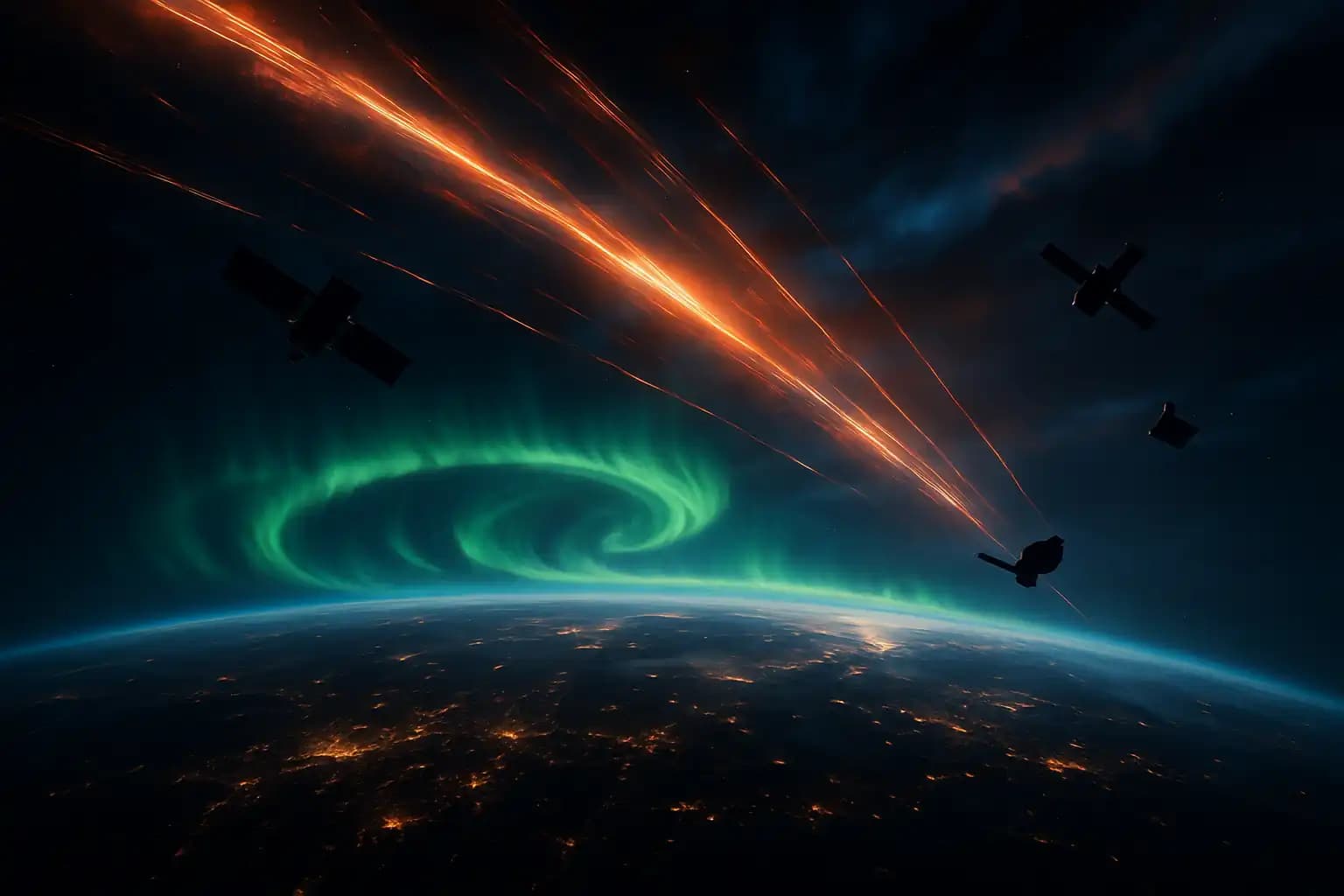Solar activity is in the spotlight after an X5.1-class solar flare erupted from sunspot AR4274, launching a fast-moving coronal mass ejection (CME) toward Earth. This event, which occurred on November 11, 2025, is considered one of the most intense solar outbursts of this cycle by the NOAA Space Weather Prediction Center. A wave of space weather effects is expected to reach Earth in 12 to 24 hours. While auroras and sci-fi blackouts make enticing headlines, this solar storm poses significant risks and unique scientific opportunities.
X5.1 Flare and Fast CME: How Extreme Solar Eruptions Evolve
This recent flare, detailed by Space.com, ranks among the largest recorded in Solar Cycle 25. The eruption released high-energy X-rays and triggered a CME moving at 1350 km/s. Astrophysicists note that flares and their CMEs often occur together, but their relationship remains under study, as outlined in the thorough overview of coronal mass ejection physics. CMEs carry billions of tons of plasma and magnetic fields. When they are “geoeffective”—directed at Earth—they can trigger ionospheric and geomagnetic disturbances.
“X-class” flares are the most energetic on the solar scale. The designation “5.1” indicates this event was over five times the baseline X1.0 threshold. NOAA forecasters noted in their briefings that this may be the strongest flare of the current cycle. Due to the active region’s Earth-facing position, the CME is likely to impact our planet directly.
Geomagnetic Storm Warnings: Technology and Infrastructure at Risk
The projected CME arrival has prompted space weather agencies to issue storm watches with a range from G2 to G3 strength on a five-level scale. Past events of this magnitude have led to widespread radio blackouts, intense auroras, and power grid voltage fluctuations. POGODNIK’s forecast emphasizes the potential for disruptions in communications, navigation systems, and satellite operations. Radio blackouts already occurred across Africa and Europe and may spread with the CME impact. Operators of power grids and satellite fleets are on high alert, reflecting the readiness seen in previous crisis scenarios documented in technological vulnerability reports and policy briefings on infrastructure risk escalation.
Geomagnetic storms are graded by impact: G1 is minor, G5 is extreme. For a G3-level event, expect increased auroral activity, possible power grid warnings, and potential irregularities in satellite orbits. Storm forecasts will be refined as the CME’s magnetic characteristics become clear—negative “Bz” in the magnetic field can significantly intensify ground-level impacts.
Aurora Borealis, Satellite Blackouts, and Global Impacts
Strong geomagnetic storms could make auroras visible far beyond their typical locations. Recent analyses from EarthSky indicate that similar events have showcased auroras as far south as central United States and Europe. Satellite operators are vigilant for “drag” (increased atmospheric resistance), which may cause low-Earth orbit satellites to lose altitude more quickly or temporarily disrupt GPS and communications. Previous X-class events showcased both stunning auroras and disruptive side effects—remarkable displays alongside brief navigation outages or temporary power failures.
For tech enthusiasts and sky-watchers, the next 12–24 hours may present a rare mix of beauty and inconvenience, reminiscent of previous high-impact solar outbursts chronicled in global cycle field notes and case studies on critical infrastructure resilience. This event will challenge our preparedness in a tech-dependent world.
Why Solar Storm Forecasting Matters—and What Comes Next
Events like the November 2025 X5.1 flare remind us that as our society grows interconnected and reliant on satellite technology, accurate solar weather prediction is crucial. Ongoing monitoring by NOAA SWPC, NASA, and global observatories provides advance warning to operators and the public. Although space weather models have improved, substantial uncertainties remain regarding CME strength, speed, and the orientation of their magnetic fields.
For those wanting to understand solar-related risks or prepare for future X-class events, resources from scientific authorities and websites like Unexplained.co offer guidance for both seasoned bunker-dwellers and casual skywatchers. While blackouts and satellite issues may dominate headlines, events like this flare are also invaluable for understanding our star and how humanity adapts to its behaviors.




